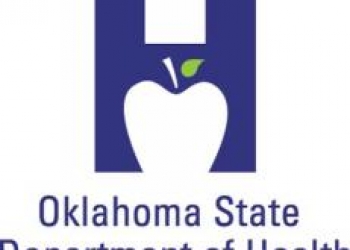News
State of Oklahoma
Posted: May 19, 2017 3:59 PMUpdated: May 19, 2017 3:59 PM
Prevention of Injury and Illness After the Storm

Ben Nicholas
The Oklahoma State Department of Health reminds residents to take safety precautions when cleaning up after a disaster. During the May 2013 tornadoes, about half of the injuries occurred during cleanup. The following tips to prevent illnesses and injuries are recommended by the Centers of Disease Control and Prevention.
Around the home
- Keep children and pets out of the affected area until cleanup has been completed.
- Wear rubber boots, rubber gloves, and goggles during cleanup of affected area.
- Remove and discard drywall and insulation that has been contaminated with sewage or flood waters.
- Thoroughly clean all hard surfaces (such as flooring, concrete, molding, wood and metal furniture, countertops, appliances, sinks, and other plumbing fixtures) with hot water and laundry or dish detergent.
- Help the drying process by using fans, air conditioning units, and dehumidifiers.
- Wash all clothes worn during the cleanup in hot water and detergent. These clothes should be washed separately from uncontaminated clothes and linens.
- Wash clothes contaminated with flood or sewage water in hot water and detergent. It is recommended that a laundromat be used for washing large quantities of clothes and linens until your onsite waste-water system has been professionally inspected and serviced.
Recognize and prevent mold
- Mold can be recognized by discoloring of walls and ceilings. There may also be a noticeable foul odor such as a musty, earthy smell. It is recommended to remove all porous items that have been wet for more than 48 hours and that cannot be thoroughly cleaned and dried. These items can remain a source of mold growth and should be removed from the home. Porous, non-cleanable items include carpeting and carpet padding, upholstery, wallpaper, drywall, floor and ceiling tiles, insulation material, some clothing, leather, paper, wood, and food. Removal and cleaning are important because even dead mold may cause allergic reactions in some people.
Avoid carbon monoxide poisoning
- Generators, grills, camp stoves, or other gasoline, propane, natural gas, or charcoal-burning devices should never be used indoors or directly outside an open window.
Safeguards against injury while using a chain saw
- Operate, adjust and maintain the saw according to manufacturer’s instructions provided in the manual accompanying the chain saw.
- Properly sharpen chain saw blades and properly lubricate the blade with bar and chain oil. Additionally, the operator should periodically check and adjust the tension of the chain saw blade to ensure good cutting action.
- Choose the proper size of chain saw to match the job, and include safety features such as a chain brake, front and rear hand guards, stop switch, chain catcher and a spark arrester.
- Wear the appropriate protective equipment, including hard hat, safety glasses, hearing protection, heavy work gloves, cut-resistant legwear (chain saw chaps) that extend from the waist to the top of the foot, and boots which cover the ankle.
- Always cut at waist level or below to ensure that you maintain secure control over the chainsaw.
Immunizations
- If you receive a puncture wound or a wound contaminated with feces, soil, or saliva, have a medical provider or health department determine whether a tetanus booster is necessary based on individual records.
« Back to News













